January 5, 2023. It was a wonderful morning of dialogue, reflection, confrontation in diversity and walking together to defend Peace and the beauty of Creation by walking some of the stages of the “Monks’ Way,” which from the center of Milan leads to the Via Francigena (the ancient Roman road that connected Canterbury to southern Italy (Puglia) and from there to the Middle East and North Africa. It is almost impossible to attempt to summarize the emotions, the suggestions, the many different moments of individual and collective exchange and growth that characterized the small but significant journey toward the Third World March for Peace and Nonviolence, which will start in San Jose, Costa Rica on October 2, 2024 and end there [in San Jose, Costa Rica] on January 5, 2025.
The day began at the headquarters of City Hall 4 of the Municipality of Milan where, in the presence of institutional representatives of both the City Hall and the City Council, the initiative was presented and parts of Federico Garcia Lorca’s “Ode to the Pomegranate” (Ode alla Melagrana) were read, right next to the plant dedicated to the memory of the recently deceased green technician Giacomo Manganaro. Tiziana Volta, from the World Coordination of “World without Wars and without Violence,” recalled the golden rule of nonviolence: “TREAT OTHERS AS YOU WANT TO BE TREATED.”
Peace, justice and custody of Creation are the key words emphasized by Gloria Mari, President of the Nocetum Center, who wanted to specify why precisely the date of January 5: “We are on the eve of Epiphany, which was the manifestation of light for the Magi. They were not Christians, yet they were looking for a star and followed that light. I was struck by a phrase from a prayer I happened to read these days: it speaks of the ‘sovereign beauty of Creation.’ It seems to me that this could be a useful cue for anyone who decides to set out on the journey.” “And by a strange coincidence, the third World March for Peace and Nonviolence will end on January 5, 2025,” Tiziana Volta adds.
In Piazzale Gabriele Rosa, after a greeting from the Community of Sant’Egidio in Corvetto, with Matteo reminding us that “we must rebel against the resignation that war exists. Peace is a daily journey,” the pastor of St. Michael the Archangel and St. Rita Parish, Don Roberto, wanted to emphasize that “peace is like a garden, which must be cared for, because where there is care, there is beauty and there is also hope.”
Second stop of the Walk the Nocetum Center (*). Here the first testimony is from Rafael de la Rubia (creator and coordinator of the World March) who, speaking about its third occurrence, invited us to constantly perform simple but profound actions that lead to creating a different world without forcing, spontaneously, with hearts and minds in peace.
Peace must be cultivated day by day, as the Hibakujumoku (from the Japanese “bombed trees”) (Translator’s note: Japanese bombed trees are trees that survived the atomic bombing of Hiroshima and Nagasaki in 1945) teach us. One was entrusted to the Nocetum Center by the Association “World without Wars and without Violence” and Pefc Italy for Green Legacy Hiroshima as a testimonial of resilience and regeneration (Translator’s note: Pefc wood comes from sustainably managed forests). During the stopover at the Center, Rev. Annamaria Gyoetsu Epifanìa, a Buddhist nun from the Anshin Zen Center in Rome, told of another entrustment of a Ginkgo biloba from Hiroshima that took place in June 2022, made a prayer of blessing to the small plant, which Nocetum wanted to call “Hope” and which, as soon as possible, will be planted. He concluded by reading to the audience a message from Sen. Liliana Segre, (called a “seed that survived Auschwitz”) (Translator’s note: Liliana Segre is a Holocaust survivor) : “Cultivating hope is a categorical imperative, at all latitudes. History and memory proceed [in a] parallel [way] and are the common heritage of humanity, exactly like trees.”
The journey ended with the arrival at the Abbey of Chiaravalle, [where people were] welcomed by the Abbot, Don Stefano, who urged [them] with a thought of his own on the meaning of the road and walking, “It is the road that leads us. We are led toward a goal, a destination: in this case, walking for the sake of peace and the custody of Creation. You end up right in a monastery: a place where one lives with a focus on what remains. Which is not easy in the whirlwind of contemporary reality. Yet, one must aim to guard what remains … like a monastery or a tree.”
A small parchment with the Golden Rule of Nonviolence (Treat the other as you would like to be treated) was donated as a reminder of the intense moments spent together. On the parchment was also an olive branch, a plant that is a symbol of peace, but also very present in the Mediterranean area. This gave us the opportunity to talk more about the Mediterranean “Sea of Peace and Free of Nuclear Weapons,” the 2019 sea march, and the goal of achieving with the third occurrence of the March the Mediterranean conference on the Peace Boat, the Hibakusha ship (a great hope after the Covid stop). Only recently Wilpf recalled the “Convention of Rights in the Mediterranean” call (Palermo, March 19, 2022).
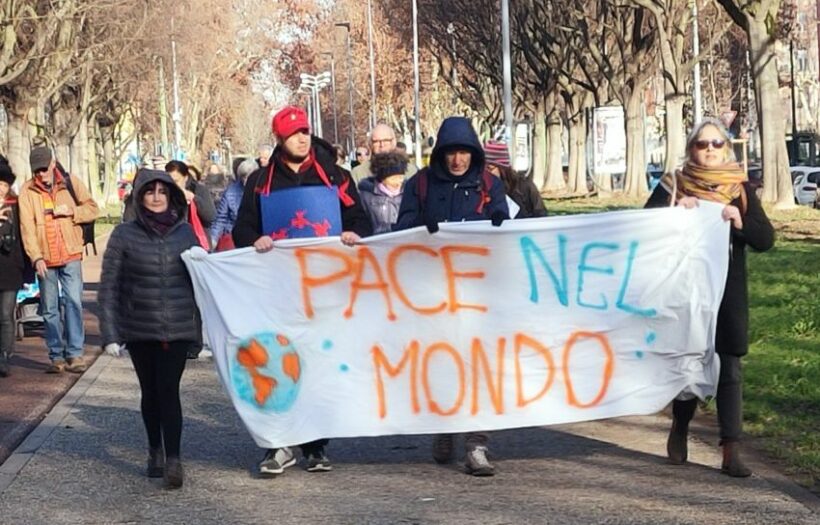
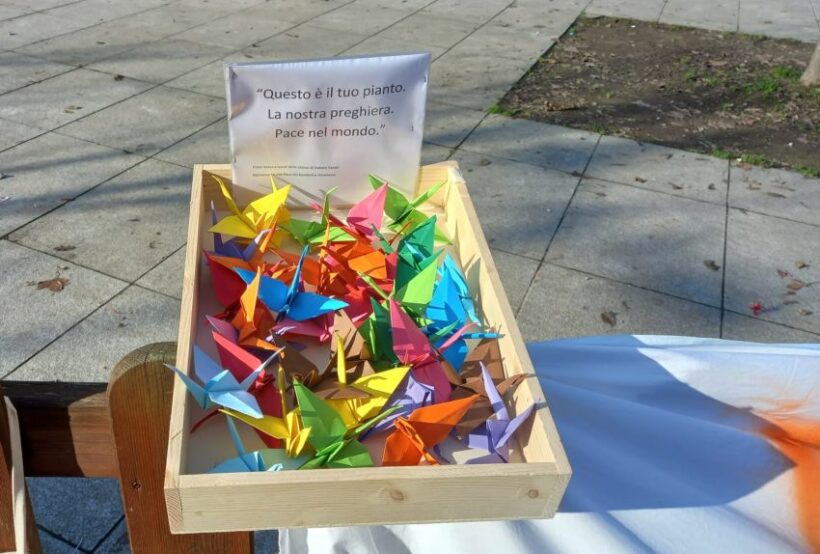
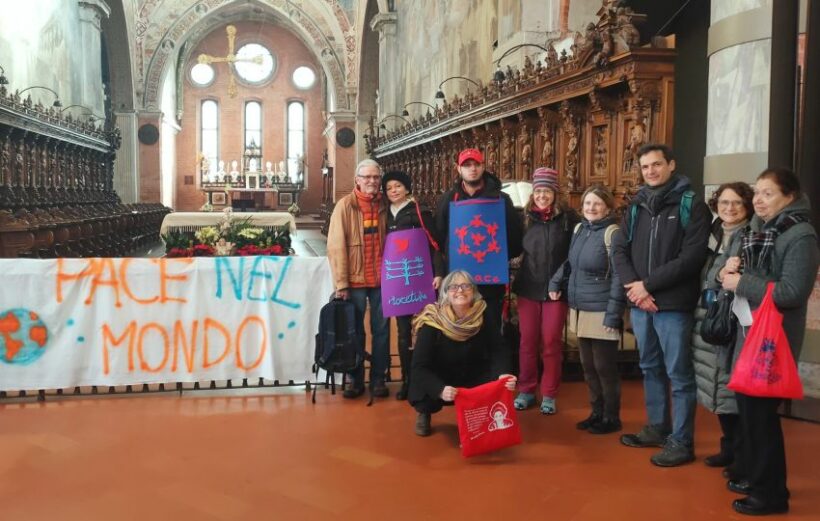
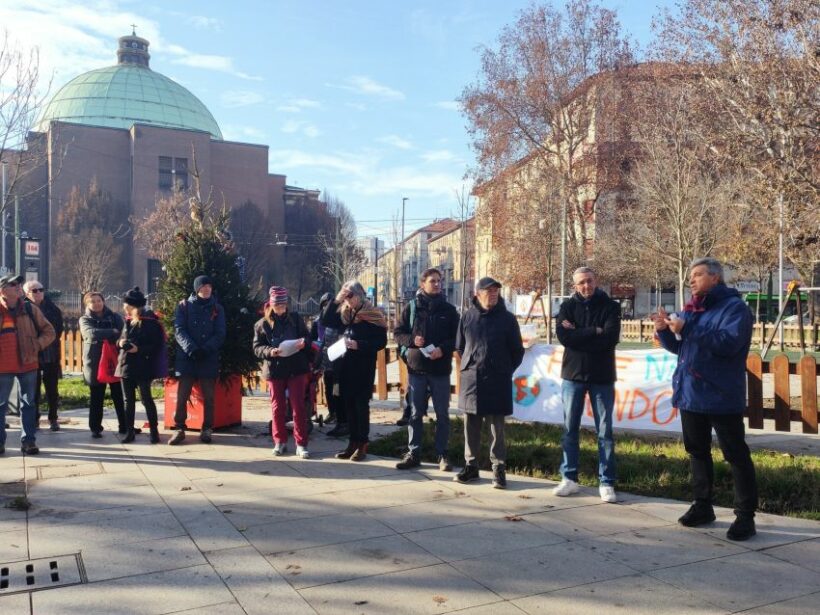
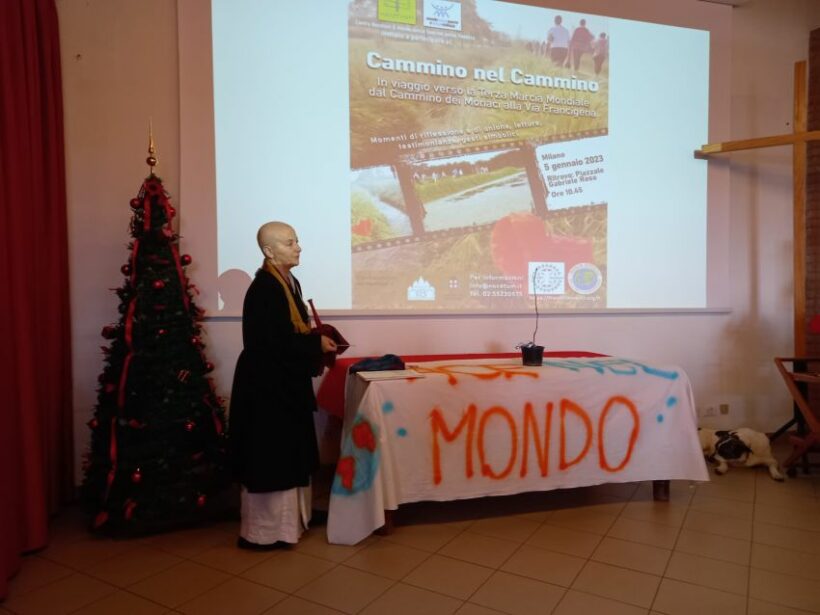
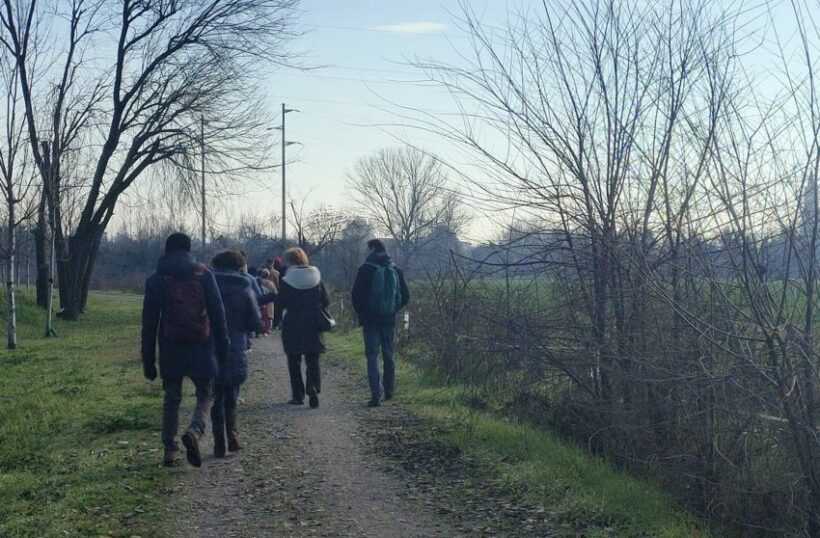
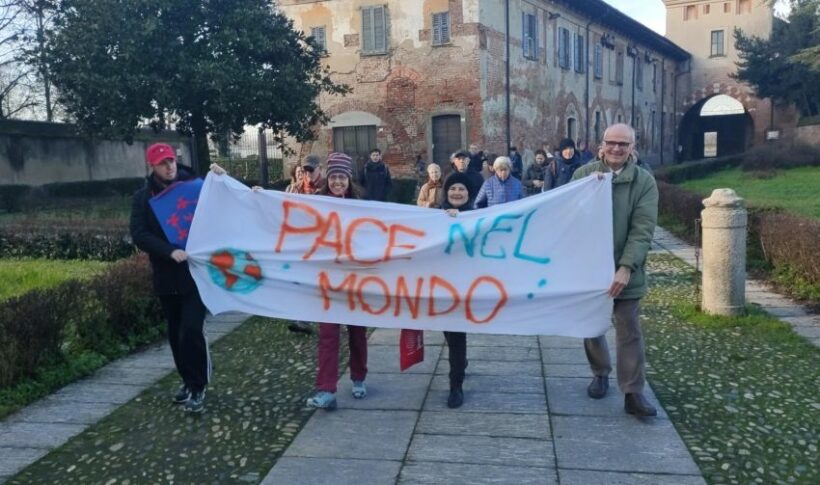
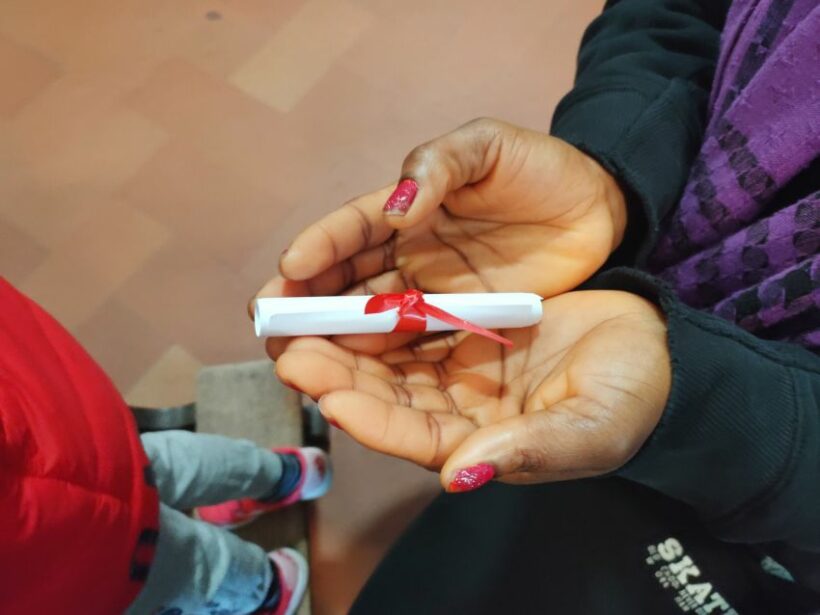
(*) founded in 1998 by Sister Ancilla Beretta (recently deceased); it houses an Educational Community for women in distress and social fragility and their children.
In addition to the shelter, Nocetum organizes didactic-educational courses for schools and groups, volunteer activities and initiatives to promote integration and social cohesion in the area.









